Forever cheerful with a real passion for life that is a lot larger than its size, the Miniature Goldendoodle or Mini Groodle is one of those designer dogs that are currently making waves in the world of pet lovers. Initially designed to bring the sunshine back in the lives of folks with disabilities and allergies, the Mini Groodle has steadily rose in the ranks of many designer breeds. Friendly with a bit of silliness, the Mini Goldendoodle never fails to impress with its wit and charm. It has this infectious personality that easily rubs off others, making it super easy to interact with virtually anyone within their environment. It’s a house dog that requires plenty of fun activities. It is the ideal four-legged companion that considers itself lucky to be part of the family. And if you think you’re ready to accept this Golden Poodle wonder in your home, keep reading to increase your knowledge about this elegant hybrid.
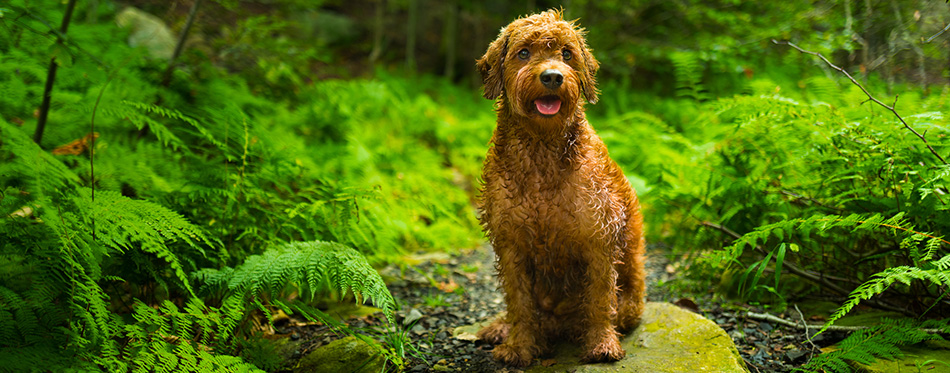
History of the Miniature Goldendoodle
If you search the internet about things related to the Mini Goldendoodle, also known as the Mini Groodle, you will read that the crossbreed was designed in the late part of the 20th century, more specifically in the 1990s.
We hate to break this to you, but this is not entirely accurate. It was the great-granddaughter of English writer Charles Dickens, Monica Dickens, who can laid claim to being the first person to develop the Goldendoodle hybrid in 1969. She was so enamored with the many fine qualities of the Poodle, especially its non-shedding and hypoallergenic qualities, and the intelligence, sweetness, and gentleness of the Golden Retriever. So, in case you hear someone telling others that the Goldendoodle was developed in the 1990s, do your share in correcting this information. Monica Dickens developed the very first ever Goldendoodle crossbreed in 1969, not in the 1990s.
However, you will be correct to assume that the crossbreed did not sit well with Golden Retriever and Poodle purists, although the Poodle has already been used as a progenitor in many crosses in the early parts of the 20th century. This even if the creator of the hybrid was a distinguished writer herself and, on top of that, the great-granddaughter of one of the world’s most recognizable names in the world of fiction.
We really cannot blame the folks of the time since obviously, they are not yet that open-minded to the idea of crossing two different breeds of dogs. Perhaps they are not even aware that many of the dogs that the world loved at the time were products of selective breeding practices that also included cross-breeding.
It was in the 1990s when people began to appreciate the beauty and usefulness of crossing a Golden retriever and a Poodle. Designers followed the philosophy of Monica Dickens (although we are pretty sure they may not even be aware that they are not the first to design such a crossbreed) in the design of the hybrid dog. The aim was to create a dog that is perfectly-suited for visually-challenged individuals who also happen to have pet dander allergies.
The Poodle is generally regarded as a low-shedding breed of dog despite its often wooly and curly coat, making it desirable for folks who happen to have very sensitive skins and a highly over-reactive immune system. The Golden retriever, on the other hand, is the epitome of what a therapy dog or even a service dog should be.
You can say the designers of the 1990s thought that they have made the perfect combination. Little did they know that somebody else actually beat them to such a feat in the late 1960s. It’s tough luck for the designers, but definitely good for pet lovers everywhere.
Now, it is important to understand that the Goldendoodle can come in three different sizes, depending on the size of Poodle that is used. Generally speaking, if you say Goldendoodle, you’re almost always referring to a Standard Poodle crossed with a Golden retriever. This should be a perfect combination since they are almost of the same size.
However, if you use a Miniature Poodle or even a Toy Poodle, the result will be a Miniature Goldendoodle or a Toy Goldendoodle, respectively. Following the laws of Mother Nature, mating a Miniature Poodle with a Golden Retriever will be quite challenging since the Mini Poodle is about 7 to 10 inches shorter than a Golden Retriever. Using a Toy Poodle will be even more challenging since it is no taller than 10 inches.
Because of the size differences between a Golden retriever and a Mini or Toy Poodle, mating will have to be done using artificial insemination methods, although it is physically possible to mate a Goldie with a Mini.
As such, when we say Miniature Goldendoodle or Mini Groodle, we are talking about crossbreeding a female Golden retriever with a male Miniature Poodle. The female must always be larger in cases of crossbreeding differently-sized dogs. This is to allow any variations in puppy sizes to be accommodated in the larger womb.
Who Are the Parents?
Getting to know the Miniature Goldendoodle means you’ve got to have a fair understanding of its parents. Many of the Mini Groodles in the market today are first-generation hybrids, meaning, they are the pups of a purebred Miniature Poodle and a purebred Golden retriever. It is also possible that a Standard Goldendoodle be crossbred with either a purebred Golden retriever or a Miniature Poodle which can result in a second-generation hybrid. Regardless of the hybridization, the parents of a Mini Groodle remain the Miniature Poodle and the Golden retriever.
Golden Retriever
Who would have thought that the venerable Golden retriever – the eyes and ears of the visually- and hearing-impaired, respectively – is also a product of crossbreeding?
You see, improvements in hunting rifles in the early parts of the 19th century meant game fowls can now be shot and downed even from great distances. Unfortunately, the great distance between the hunter and the downed bird meant the prize can be easily lost as setters and pointers were definitely not up to the task. There had to be a dog that was fast enough and can get into the water and retrieve the downed game fowl.
In 1868, Dudley Marjoribanks, 1st Baron Tweedmouth mated Nous, a yellow retriever, with Belle, a now-extinct Tweed Water Spaniel producing 4 wavy-coated retriever-spaniel puppies. These hybrid pups became the foundation for the careful breeding of the Golden retriever. Marjoribanks used the St. John’s water dog, the Irish setter, two wavy-coated black retrievers, and a sandy-colored Bloodhound. All of these dogs were famed for their individual hunting skills.
A favorite among persons with disabilities, Golden retrievers have truly proven their worth. Its gentle temperament is perfect for soothing the wounded soul, for bringing calm into the troubled psyche of visually- and hearing-impaired individuals. And while its gentle and friendly nature makes it a very unlikely candidate for security duty, it is nevertheless the go-to breed when it comes to search and rescue, bomb and illicit substance detection, and even police work.
Kind, confident, and friendly, one look into the eyes of a Golden retriever is often enough to melt anyone’s heart, even if it is made of stone. They easily trust persons, even those they do not know. Sure, they may have that guarded stance at first, but their trusting instincts almost often kick in. It’s extremely patient with children. Even when pulled and tugged, a well-mannered Golden retriever will never nip, bite, or snap at kids. The Golden retriever is always calm and very biddable; the perfect family pet.
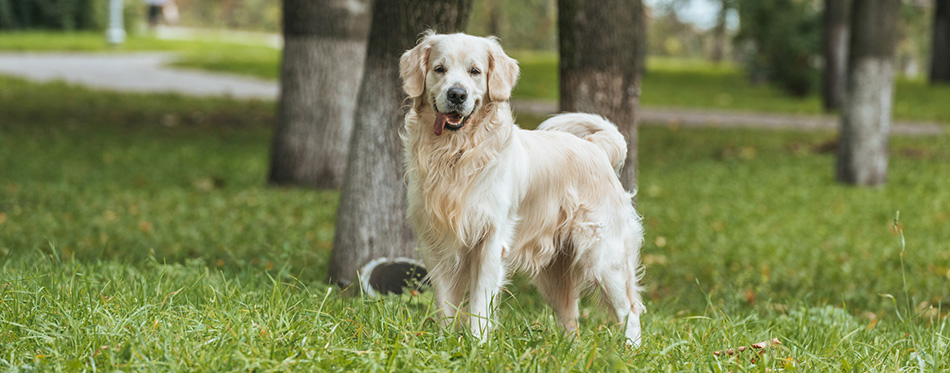
Miniature Poodle
It is not known when the Miniature Poodle was bred or developed, although it is possible that it came well before the creation of the Toy poodle in the 18th century. The Standard Poodle was the very first of the breed to be created, having been depicted in popular German paintings and drawing in the 15th century.
There is quite a controversy, though, as to the country of origin of the Poodle. Popular media, especially animated films and children’s TV shows, depict the breed as having a French personality. This is most likely in reference to the popular observation that the then-French King, King Louis XVI, pampered these dogs in his royal court.
Both the British and American Kennel Clubs recognize Germany as the Poodle’s country of origin, citing the existence of a duck hunting dog known as “Pudelhund”. The FCI recognizes France as the origin in reference to the possibility of the Poodle being a descendant of the French Barbet.
Regardless, the Poodle is well-known for its superior intelligence, being second only to the Border Collie. Designed as a duck hunter, the Poodle was a highly trainable hound, always on the alert for downed prey or even for the faint sounds of bush twigs being disturbed in their natural formation by escaping game. Its hunter’s instincts are unmistakable.
Behind the impressive hairdos, colorful ribbons, and a highly regal attitude, the Miniature Poodle is a very affectionate family dog that is perfect for first-time pet parents. It is an all-around performer, excelling well in hunting activities as well as in the circus.
Obviously, the best thing about the Poodle is that they don’t shed that much, making them highly valued for individuals who may have an unusually hyper-reactive immune system.
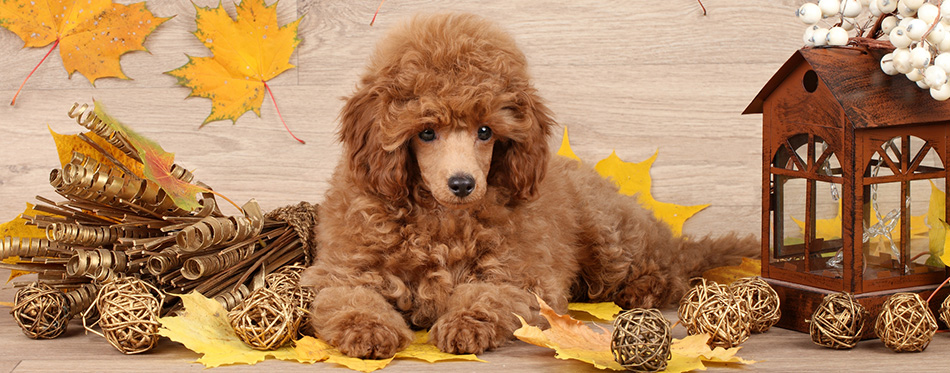
Quick Facts
Don’t expect your Miniature Goldendoodle to be exactly similar to the Mini Groodle of your friend. Because the parents are of different breeds, it is quite difficult to get what you may want to call as a ‘standard’. For crossbreeds or hybrids, there is no such thing as ‘standard’. However, we can always look at the similarities of the parents and try to stipulate the most likely range of characteristics that you can look forward to in your Mini Groodle. Here are some facts we know so far.
- A fully-grown Miniature Goldendoodle can tip the weighing scale between 15 and 35 pounds with the female Mini Groodle generally lighter by a few pounds than the male.
- The Mini Groodle can grow up to 20 inches, but should never be smaller than 13 inches. Again, females are usually at the shorter end of the measuring stick.
- The hybrid can be a light shedder (if it has the genes for the trait from its Golden retriever parent) or a non-shedding dog (if it has the trait of its Mini Poodle parent). This makes it a good dog for folks with allergies.
- The coat can come in three types. A wavy coat is often the result of crossbreeding a straight-haired Golden and a curly-haired Mini Poodle. Curly-coated Mini Goldendoodles mean it got this trait straight from its Mini Poodle parent. If it’s straight, then it’s the Golden retriever’s genes that are dominant in the Mini Goldendoodle.
- This designer dog is not a barker, making it a very poor candidate for a watch dog or even a guard dog. Besides, it is so friendly that it might even lick the feet of an intruder without realizing that it should at least warn you of the unwanted presence.
- The Mini Groodle requires half an hour of exercise every day.
- It is a family dog. As such it thrives on the companionship and affection shown by its family. Leave it alone too long and it will develop separation anxiety and depression.
Things You Should Know
Before you finally decide to bring home a Miniature Goldendoodle, why don’t you take some time to understand more of what you’re going to bring into your family? After going through these important things that every owner of a Miniature Goldendoodle should know, you can then make the decision whether to get one or look for another dog.
Training
The Mini Groodle may be a super-smart dog, but it still needs you to train it straight from puppyhood. While it is the perfect dog for novice pet owners, a Miniature Goldendoodle puppy needs to be housetrained, potty-trained, and even trained to follow basic commands. These should be fairly easy for as long as you adhere to the principles of positive reinforcement, using plenty of high-quality dog treats, lots’ a love, and plenty of extra playtime.
The good thing about this hybrid is that it comes from the planet’s number 2 and number 4 most intelligent dog breeds, the Poodle and the Golden retriever, respectively. Teach it tricks and it will be a cinch since your hound is primarily motivated to please you. Just show that you’re happy with what it is doing and it will keep on surprising you with its remarkable skills and showmanship.
Take a look at our review of Indoor Dog Potty for more options.
Feeding
This can be tricky. We are always told that we have to feed our puppies 3 to 4 times a day and our adult dogs twice a day. However, this is not always the case. If your Miniature Goldendoodle is in the smaller end of the spectrum, say nearer the 15-pound lower weight limit, you need to treat it more like a small dog that has a much faster metabolism. This means that it uses its calories a lot faster than other dogs. As such, you should feed it a more calorie-dense dog food with more frequency than the standard twice daily meals. You can feed it 3 times a day.
If your Mini Groodle happens to be on the heavier side of things, then you can go for less calorie-dense formulations and feed it the usual twice a day meal. However, it is always best to also consider the activity level of your pet. It is important to always keep in mind that a highly active dog will burn its calories a lot faster than a couch potato. Hence, this dog will require more frequent calorie-dense meals.
Check out our guide on High Fiber Dog Food for more info.
Exercise
Yes, they’re small, but this is a lame excuse for not taking them for a daily walk. Both the Poodle and the Golden retriever are excellent working-hunting dogs. They’re bred specifically to work and have high energy levels. As such you should always make it a point to get your Mini Groodle its daily exercise.
Be mindful of the size of your Mini Groodle, however. If it is small, then you should keep the daily walks short, say 15 to 20 minutes every day. If your Miniature Goldendoodle is bigger, then you can ramp up its exercise to about 30 to 45 minutes every day.
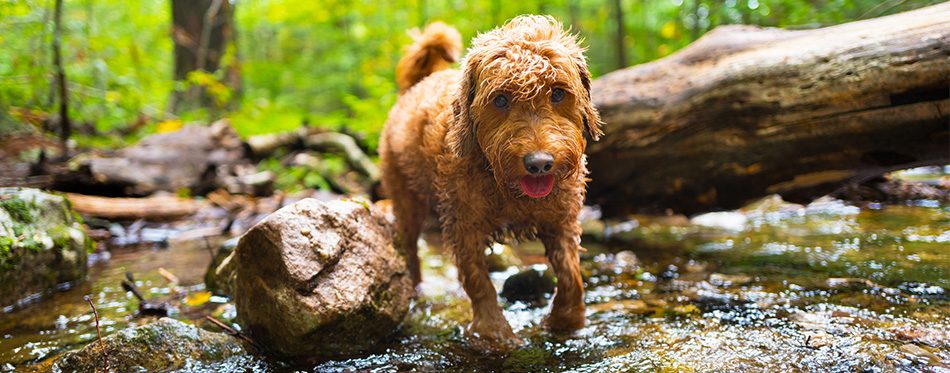
Socialization
Both parents of the Miniature Goldendoodle are very social animals. They’re very friendly even to strangers and other dogs or other pets. If you could take them to the zoo, they’d most likely befriend all the animals there. Even if you have an intruder in your house, your Mini Groodle might just as well welcome him or her with a warm smile and a friendly wag of its tail. That’s the problem with the Mini Groodle. It is so friendly that it really cannot tell the difference between a friend and a foe. In the eyes of the Miniature Goldendoodle, everyone is a friend.
Grooming
You’ll love the Mini Groodle if you’re the kind of person who is especially averse to pet hair or you’ve got serious allergy concerns. This hybrid doesn’t shed that much. However, it is still crucial that you brush its coat at least every week if you want to retain the health of its coat.
Regular brushing of the teeth is also a must, preferably done every day. Clipping the nails should also be done on a regular basis and so is the cleaning of its ears. Taking your Mini Groodle to a dog groomer at least once every 6 months is always a good idea.
You might be interested in some of our dog grooming guides, such as dog nail clippers, dog ear cleaner, dog wipes, and dog shedding brush.
Health
Some folks believe that mixed breeds are sturdier than purebreds. This is not entirely true. The thing is that the dog has the tendency to inherit the health conditions of both parents which can further amplify the effects of these conditions on its overall health.
For the Miniature Goldendoodle, patellar luxation is almost always a concern. Progressive retinal atrophy and Von Willebrand’s disease can also be major concerns for your growing Miniature Goldendoodle. It is always advisable to ask the breeder for information about the parents’ state of health so you’ll have an idea of what diseases the Miniature Goldendoodle may have.
The Miniature Goldendoodle is for you if you…
- Are new to the whole idea of pet parenthood and are willing to learn the different aspects of being a good pet parent, including early dog socialization and training
- Have children in the family or other dogs or pets in the house
- Have allergies or someone in the household does
- Can devote at least half an hour’s worth of exercise or play time every single day
- Have someone who can always stay at home to keep your dog company while you’re away
- Don’t like dogs that bark or howl
The Mini Groodle is absolutely not for you if you…
- Require a watch dog or a hound that will scare would-be intruders in your home
- Have to leave the Mini Groodle at home alone and for prolonged periods of time
- Cannot commit to at least 20 minutes of daily walks or even vigorous play
- Live in an apartment or a house without a fenced yard
- Hate brushing your Mini Groodle’s coat at least once a week
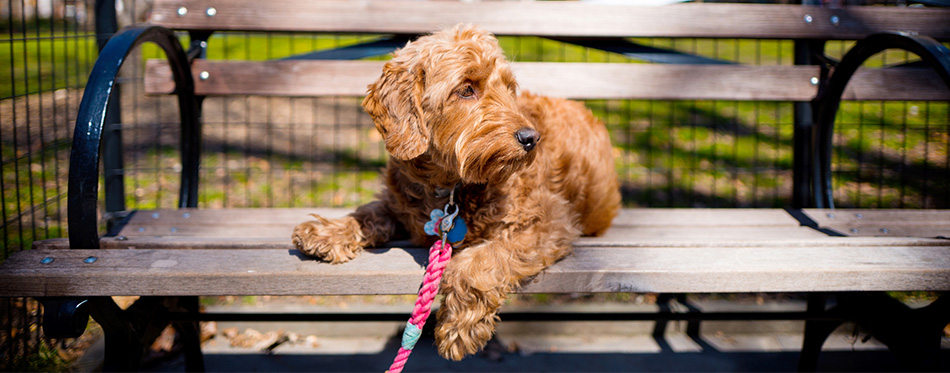
Temperament
Very few breeds of dogs – pure or cross – can ever come close to the friendliness of the Miniature Goldendoodle. As we have already shared above, it’s too friendly that it simply views everyone as amiable. It’s charming, gentle, loyal, and kind, making it the kind of dog that every loving family wants. But if it’s a watch dog you’re after, it simply isn’t fit for the job. It is very entertaining and compassionate to kids, nonetheless. Never shy, the Mini Groodle will interact with anyone or anything that breathes and moves. It is a breath of fresh air, the warm life-giving rays of the golden sun that can surely bring happiness and pride to the family that decides to take a four-legged characterization of sweetness.
The Miniature Goldendoodle is an amiable and very friendly hound, sometimes to a fault. It’s not a watch dog, but it sure can bring a warm smile to your face with its wit, charm, and natural gentleness.
Source:
- Mini Goldendoodle Information – PetMD

